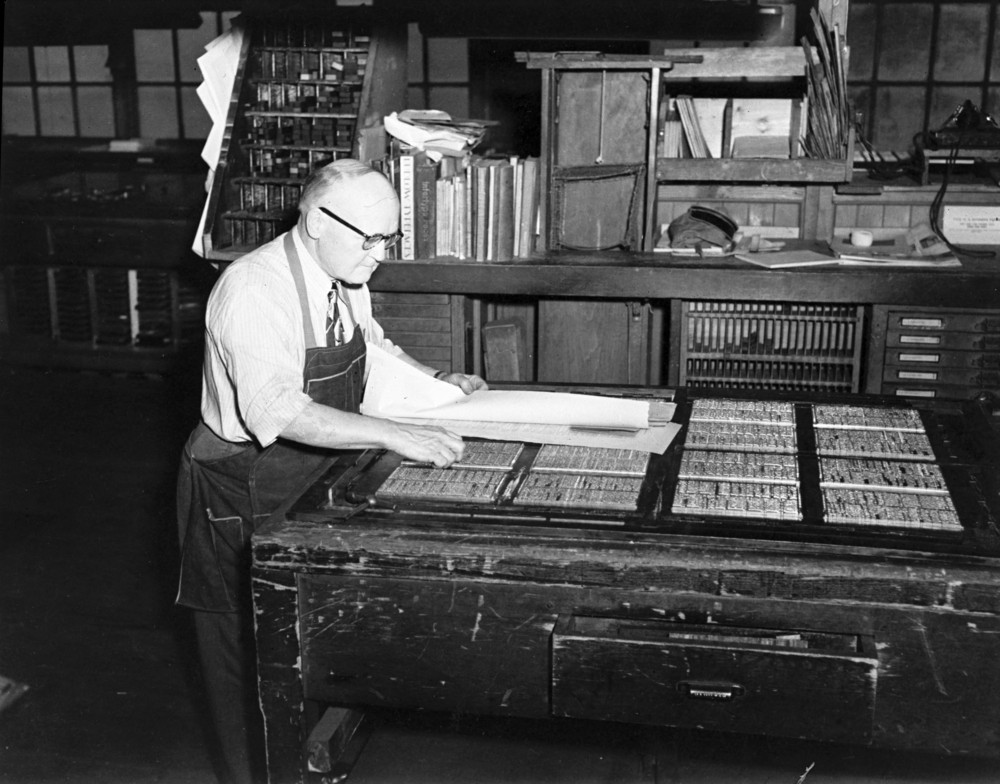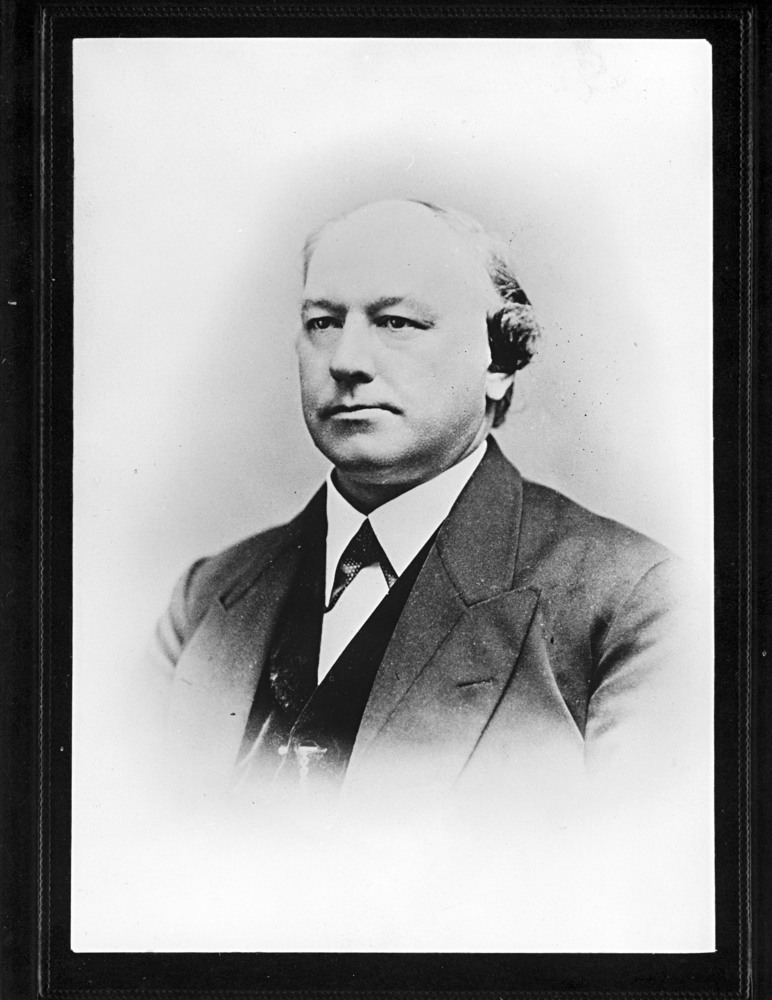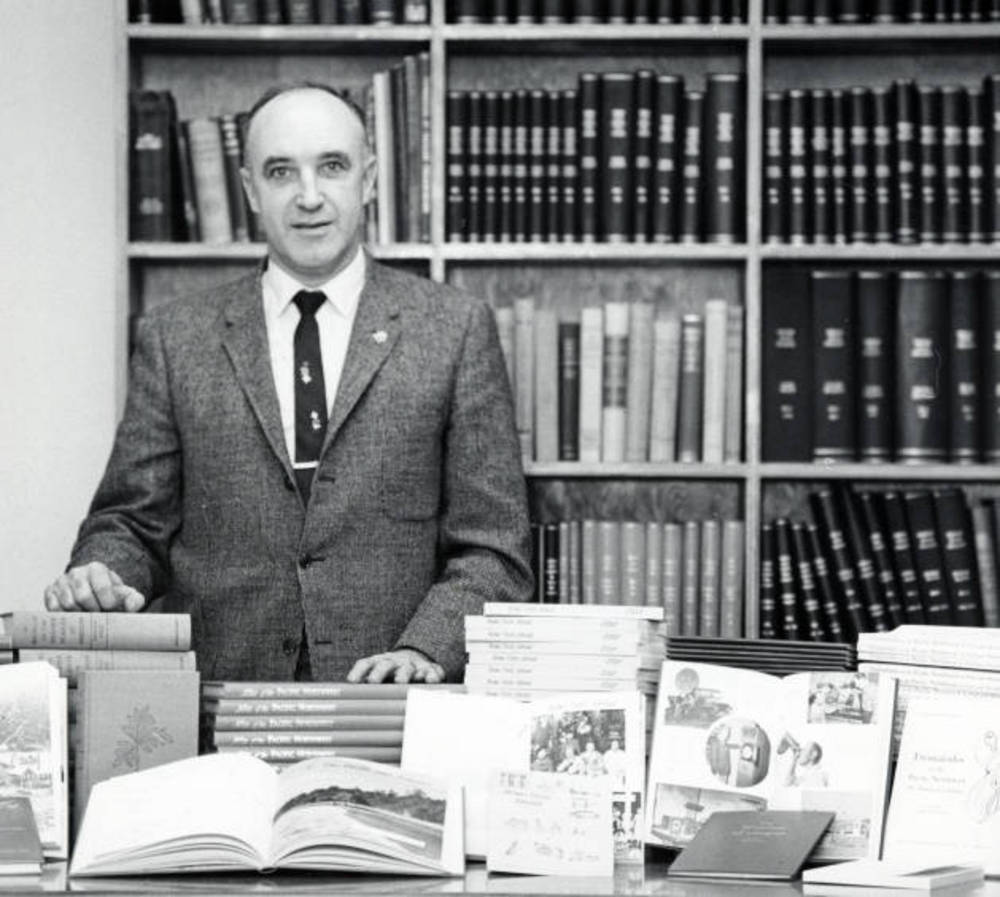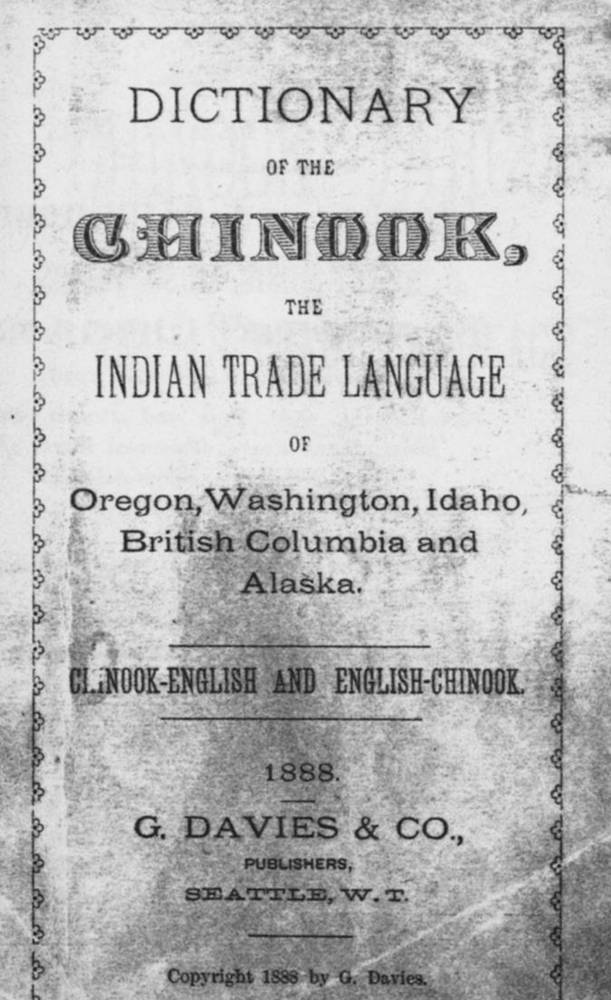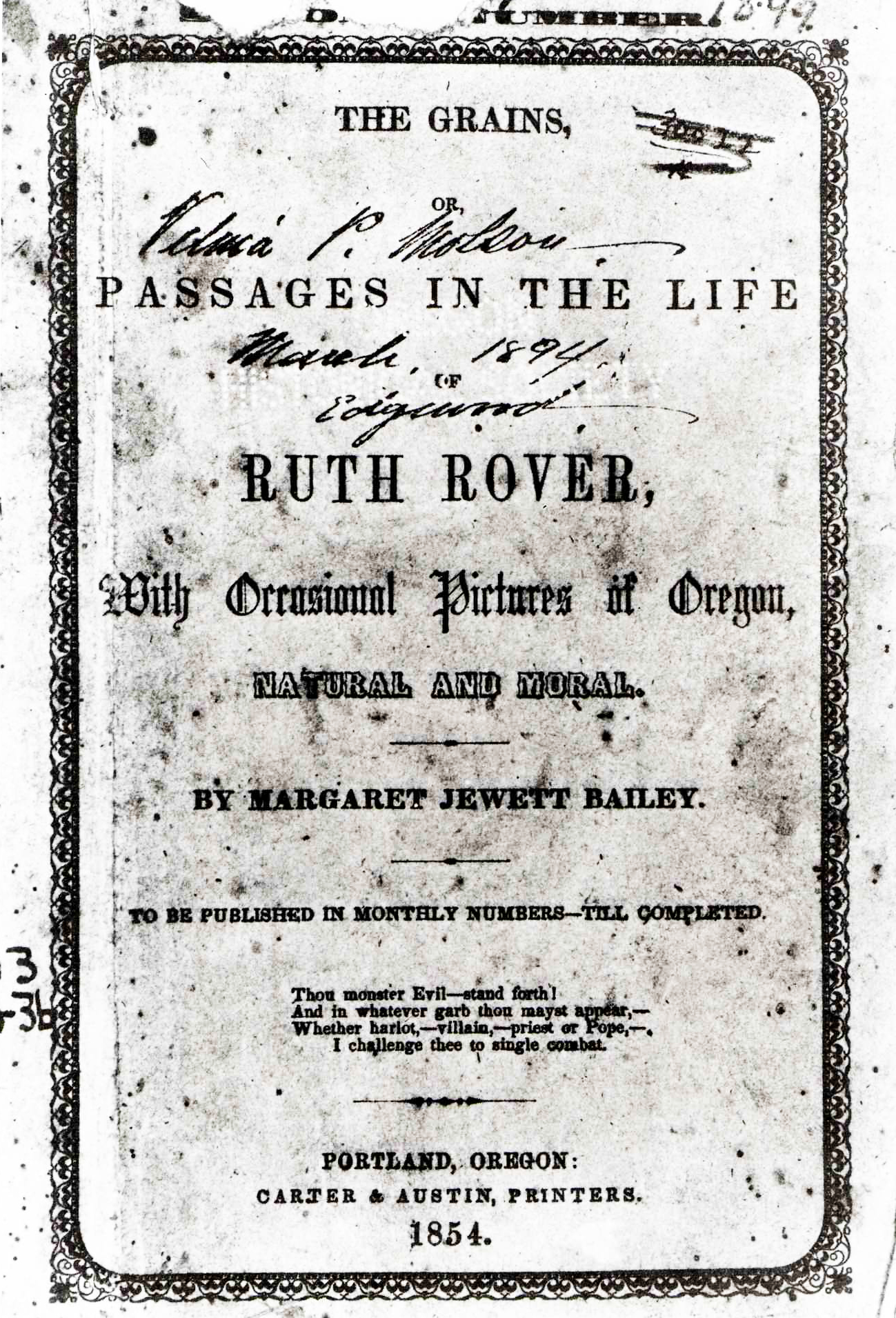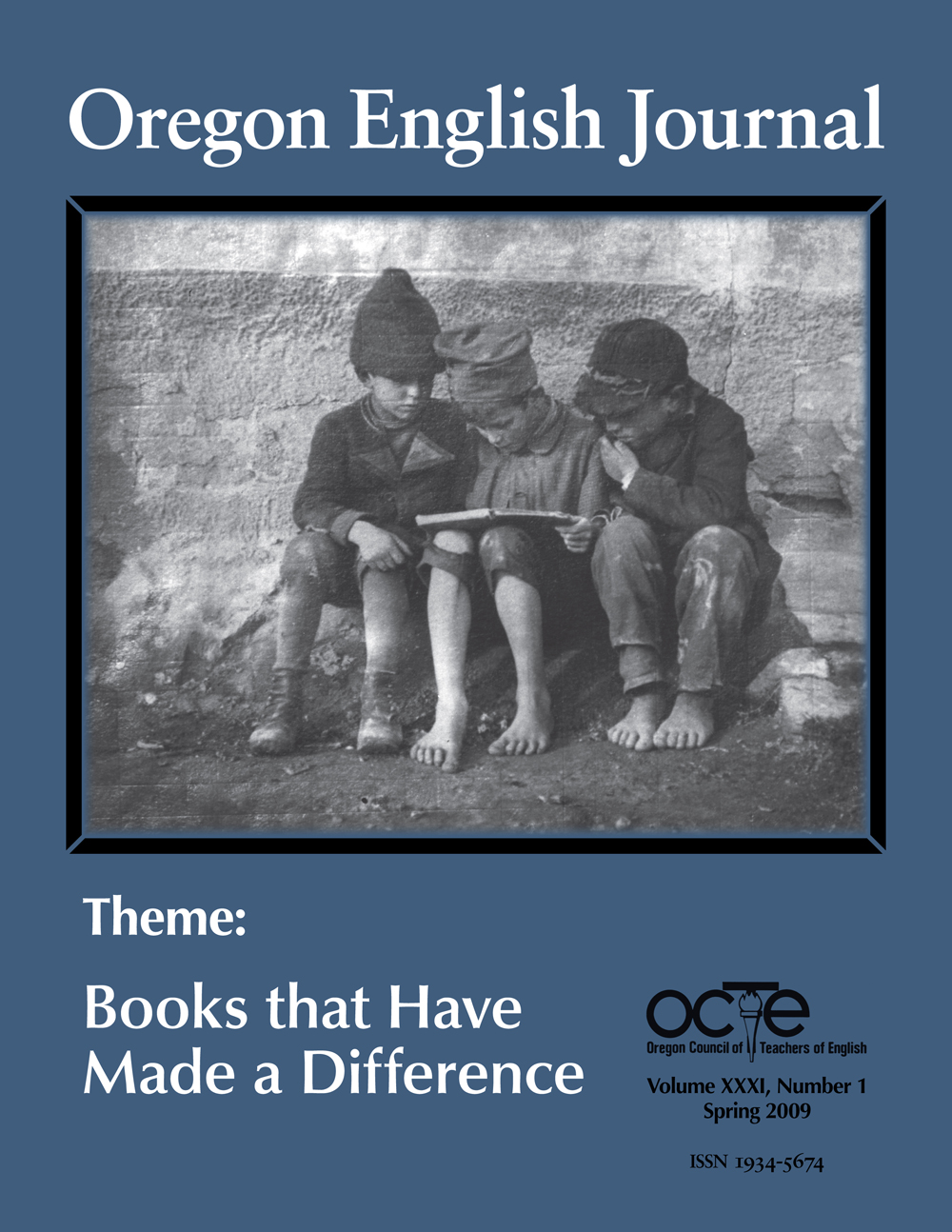Oregon's first book was Nez-Perce's First Book, an octavo-sized pamphlet published in 1839 by the mission at Lapwai in present-day Idaho (then a part of Oregon territory). The book was a lexicon and grammar issued to teach Nez Perce children to read and speak English.
Newspaper-publishing ventures soon followed, connecting the new settlers who put down roots across the sparsely populated region. The territory's first newspaper, the Spectator of Oregon City (1846), was published by the Oregon Printing Association (OPA), a group of businessmen led by George Abernethy. The OPA made a conscious effort to be politically neutral in its published content, which included short stories, farming tips, weather information, news from the East, and local news.
Newspaper publishers were also responsible for the handful of the books issued before Oregon's statehood, including the region's first school primer, published by the OPA in 1847; William Adams' political satire, A Melodrame Entitled "Treason, Stratagems, and Spoils" in Five Acts, published by the Portland Oregonian (1854); and the region's first work of fiction, The Grains (1854), by Margaret Jewett Bailey, published by William Carter of the Milwaukie Western Star.
The first publisher to focus attention on book publishing in Oregon was Stephen J. McCormick, who opened Portland's Franklin Book Store in 1852. After establishing a steady trade, McCormick funded the publication of several books, including Francis Norbert Blanchet's Chinook Dictionary (1853), Abigail Scott Duniway's novel, Captain Gray's Company (1859), and Joaquin Miller's Joaquin Et Al. (1869).
George Himes and A.G. Walling, both of Portland, were the only other nineteenth-century printers to attempt book publishing. Most early Oregon publishers found it more lucrative to fund and direct the compilation, printing, and distribution of periodicals. As a result, creative writers such as Joaquin Miller, Frances Fuller Victor, and C.E.S. Wood were published in Portland-based, illustrated literary magazines such as West Shore (1875-1891) and Pacific Monthly (1898-1911). Authors interested in the region's history found a home in the Oregon Historical Quarterly (1900-), which set high standards for research and encouraged popular interest in Oregon history.
By the beginning of the twentieth century, there were enough writers in the Pacific Northwest that job printers such as F.W. Baltes and the Metropolitan Press found it profitable to print books directly for authors. This demand was an important factor in the decision by the Metropolitan Press (later Binfords & Mort) to become a publisher of regional literature. Over the next thirty years, Binfords published some of the region's most important historical works, including Works Progress Administration (WPA) guidebooks, an Oregon county history series, Oregon Geographic Names (editions one through three), and the Dictionary of Oregon History. By 1950, Binfords & Mort was the largest publisher in the Pacific Northwest.
Firms such as Binfords, however, were exceptions, and most Oregon publishers remained dependent on newspaper or job printing. The twentieth century saw the increasing dominance of academic and scholarly presses in Oregon, as the University of Oregon's fine printing program, directed by John Henry Nash (1927-1942), the Champoeg Press (1952-1981), Oregon State University Press (1961-), and the Oregon Historical Society Press (1967-2007) published the best books on regional history, science, and literature.
At the end of the twentieth century, despite a national decline in book publishing, a number of specialty presses emerged in Oregon. Dark Horse Comics, which focused on graphic novels, became one of Oregon's largest and most nationally recognized publishers. Other publishers, including Lone Goose Press, Ink-A! Press, Press-22, and Trace Editions/Seluzicki Fine Books, found markets for finely crafted handpress books. Harvest House, Idyls Press, Multnomah Publishers, Oregon Catholic Press, and Pastoral Press published large numbers of spiritually themed books, while Franklin, Beedle & Associates and Pocket Press found niche markets with computer manuals and guides to law enforcement.
The market for large-format art books was tapped by Collectors Press, Graphics Arts Center, and Beautiful American Publishing, while CALYX Press, Eighth Mountain Press, and the WomanShare Collective provided venues for feminist writers. Although difficult to assign to a single category, Timber Press, Ooligan Press (a student press at Portland State University), Breitenbush Books, Traprock Press, Blue Heron Publishing, Inkwater Press, Crumb Elbow Publishing, Story Line Press, and the Webb Research Group issued a range of books that could be best defined as works of regional literature, history, and natural science. Despite the fracturing of Oregon's publishing industry into smaller niche businesses, these publishers reflected the interest of Oregonians while providing an effective forum for discourse.
-
![]()
Publisher Peter Binford of Binfords and Mort.
Oreg. Hist. Soc. Research Lib.
-
![]()
Stephen J. McCormick, early Oregon book publisher.
Oreg. Hist. Soc. Research Lib., bb003055
-
![J. K. Munford with Oregon State University Press books, 1960.]()
J. K. Munford.
J. K. Munford with Oregon State University Press books, 1960. Oreg. State Univ. Archives, Alumni Assoc. Photo Coll., P017:3808
Related Entries
-
![Chinook Jargon (Chinuk Wawa)]()
Chinook Jargon (Chinuk Wawa)
According to our best information, the name "Chinook" (pronounced with …
-
![Ebbert T. (Bert) Webber (1921-2006)]()
Ebbert T. (Bert) Webber (1921-2006)
Bert Webber called himself a research photojournalist. It is an apt des…
-
![Margaret Jewett Smith Bailey (1812-1882)]()
Margaret Jewett Smith Bailey (1812-1882)
Writing under the pen name Ruth Rover, Margaret Jewett Smith Bailey wro…
-
![Ooligan Press]()
Ooligan Press
Ooligan Press is a student-run teaching press affiliated with Portland …
-
![Oregon English Journal]()
Oregon English Journal
Oregon English Journal, published twice yearly, is the award-winning pu…
-
![Oregon Spectator]()
Oregon Spectator
Established in 1846, the Oregon Spectator was the first newspaper publi…
-
![The Oregonian]()
The Oregonian
The Oregonian, the oldest newspaper in continuous production west of Sa…
Related Historical Records
Further Reading
Belknap, George. Oregon Imprints, 1845-1870. Eugene: University of Oregon, 1968.
Powers, Alfred. History of Oregon Literature. Portland, Ore.: Metropolitan Press, 1935.
Turnbull, George. History of Oregon Newspapers. Portland, Ore.: Binfords & Mort, 1939.

